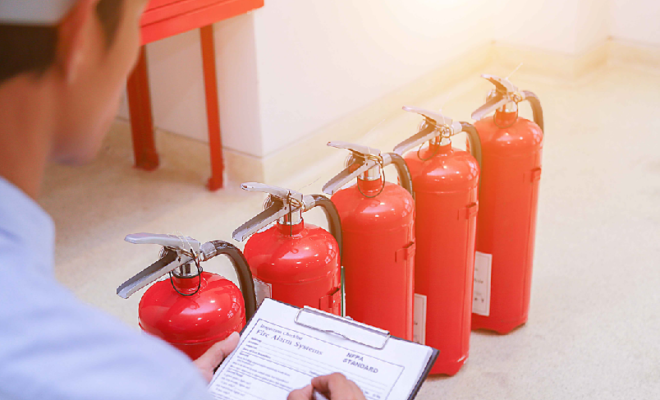What Happens During a Routine Fire Inspection?

Fire inspectors examine homes, businesses, and other buildings to ensure safety according to fire codes. They detect possible fire hazards and help people be prepared in case of a fire-related emergency. Injuries and casualties from fires can almost always be prevented, and that’s why fire inspections are crucial.
After gaining experience as a firefighter and going through in-depth fire inspector training, these professionals are armed with a vast array of knowledge to keep people safe. Here are a few things that may happen during a routine fire inspection.
Notice
Fire inspections typically happen every other year. Prior to an inspection, businesses will receive a notice in the mail of the date of inspection– usually within 10 days. The letter will include a list of common fire code violations. This is to ensure that businesses know what to expect and have a chance to fix potential issues ahead of time. Some common violations include unclear exit paths, improper usage of extension cords, blockage of sprinklers, exceeding building capacity, and out-of-date fire extinguishers.
Examination
During the inspection, fire inspectors walk through the entire building, looking for potential hazards and safety protection measures such as:
- Accessibility and condition of exits
- Emergency lights and emergency exits
- Electrical hazards
- Flammable chemicals and liquids
- Other combustible materials
- Availability of fire extinguishers and their service dates
- Fire alarm condition
- Presence of sprinklers and other safety measures
- Existing emergency evacuation plan
Reinspection
Fire codes are detailed and always being updated. If the fire inspector finds any fire code violations or other potential dangers, they will require that the issue be corrected within a certain period of time. Typically, reinspections are performed after 40 days, giving businesses plenty of time to make the necessary safety changes. Should the concern still be present during the reinspection, the fire inspector may issue a fee.